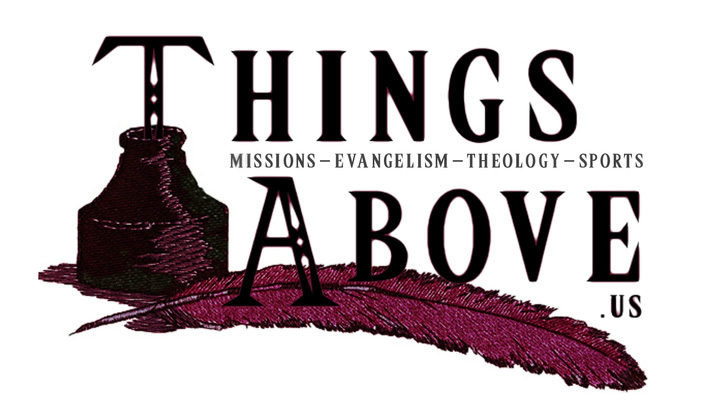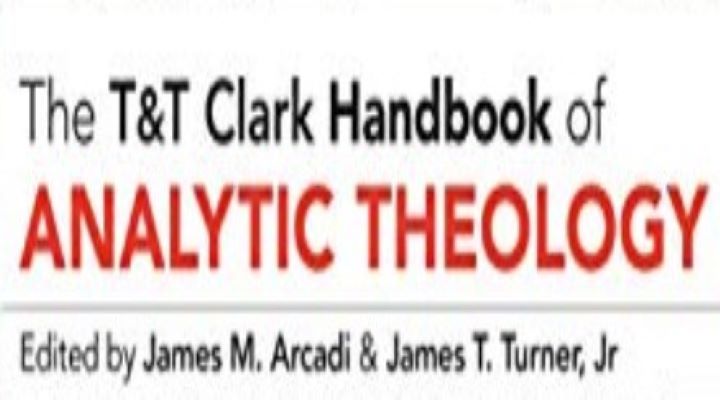Biographical Sketch of the Editors
James M. Arcadi serves as Assistant Professor of Biblical and Systematic Theology at Trinity Evangelical Divinity School. He authored An Incarnational Model of the Eucharist and also served as editor of Love Divine and Human: Contemporary Essays in Systematic and Philosophical Theology.
James T. Turner Jr. serves at Anderson University as Assistant Professor of Philosophy. He has written for the Journal of Analytic Theology and is the author of On the Resurrection of the Dead: A New Metaphysics of Afterlife for Christian Thought.
Introduction: So, What is Analytic Theology?
My fellow theology nerds are more than likely up on terms like systematic theology, historical theology, and biblical theology. These disciplines are not at all recent developments and have been written about extensively. Like me, many of our readers may be less familiar with the field of analytic theology (AT). The term originates with the 2009 book, Analytic Theology: New Essays in the Philosophy of Theology from Oxford University Press [1].
In our book under review today, The T&T Clark Handbook on Analytic Theology, James Arcadi explains that throughout church history, “theology has always been done in some kind of conversation with philosophy (1).” Put simply, AT is “an intellectual culture in which certain sensibilities, tools, and characteristics are borrowed from analytic philosophy for properly theological ends (1).” The editors identify bridge building from theology reaching out to philosophy as the primary goal of this volume (4). Their target audience includes the student and scholar investigating what AT has had to say about particular theological topics.
Summary
The book is made up of 37 chapters across six parts. In Part I, “Methods and Sources,” the authors explain analytic theology itself and catch us up on the debates and formulations so far (7–82). Theology proper comes next in Part II: “Doctrine of God” (83–194), followed by the “Person and Work of Christ” in Part III (197–254), and Part IV looks at Pneumatology (study of the Holy Spirit) (255–294). Part V covers the doctrines of “Creation and Humans” (295–436), and Part VI is on “Experiences and Practices” (437–498). The authors include bibliography of AT, notes on the contributors, and an index of names and topics (499–529). Unfortunately, there is no Scripture index.
Norma Normata
Lucas Stamps’s contribution, Chapter 4’s “Norma Normata: The Role of Tradition in Analytic Theology,” was one that immediately had my attention. Stamps examines the role that historical context and tradition play in interpreting Scripture and the development of doctrine (45). He argues that while AT has had much to say about reason, there has also been significant ink spilled over the role of tradition, ranging from what he calls “maximalist approaches” to “minimalist approaches.”
Stamps draws on the famous Wesleyan Quadrilateral — Scripture, tradition, reason, and experience — as a helpful framework. The Reformation battle cry of Sola Scriptura “was never meant to grant free rein to privatized scriptural interpretation,” hence the need to think through the role tradition, reason, and experience play in our understanding of the Bible (46). When carefully defined and understood, “tradition” is the norma normans or “rule that rules;” while Scripture is the norma normans non normata or “ruling rule that cannot be ruled (47–48).”
Stamps admits the challenges speaking of “the tradition.” In some areas of Christian doctrine, there has been sharp disagreement, variety, and development; while in other areas there has been remarkable consistency. Stamps riffs on Oberman’s insightful Tradition I / Tradition II paradigm (48–50). Tradition I “reveals to the church the authoritative way in which Scriptures are to be interpreted (48).” Again, Sola Scriptura does not mean outright rejection of any and all tradition. Oberman’s Tradition II refers to those doctrines which may have been passed down as tradition and cannot be found being clearly taught in Scripture. Think purgatory and the bodily assumption of Mary. With respect to my Roman Catholic friends, I should mention that Stamps also takes aim at some Anabaptists who functionally practiced what McGrath called “Tradition 0.”
While Oberman’s framework is helpful, Stamps sees it as incomplete (49). He argues for a four-level hierarchy of authoritative tradition. First are the ecumenical creeds and councils, followed by certain classical doctrines including divine simplicity and impassibility. Third, confessions of faith which “serve as binding guardrails for those who have accepted their ecclesial authority (49–50).” Finally, there are the “theological luminaries,” like Augustine, Anselm, Aquinas, and other great old dead guys of church history (50).
So how has analytic theology fared when it comes to exploring the role of tradition? What contributions could AT make in the discussion surrounding tradition? Stamps admits that some AT proponents seem to take an ahistorical posture and others have been unclear about the role of church history and tradition in formulating doctrine (50–51). Stamps returns to the notion that theology can and should be done in conversation with tradition without falling into a wooden traditionalism. As he insightfully puts it, “it is traditionalism that gives tradition such a bad name (51n10, emphasis added).” Stamps concludes that if AT hopes to have any relevance going forward, something closer to the “maximalist” approach to tradition is the wisest course to follow (53).
Trinity
Thomas H. McCall brings the tools of analytic theology to the challenging doctrine of the Trinity. He opens with the complete text of the Athanasian Creed’s formulation of the Trinity (181). Trinitarianism is such an essential teaching of the Christian faith that altering it risks departing from Christianity itself, and yet it is such a mystery that theologians have been forced to engage in considerable debate over the specifics. McCall begins his concerns by laying out the so-called “Threeness Oneness Problem.” How can God be one and yet also three? At this stage, it probably would have been more efficient for McCall to simply use the language of oneness in being and threeness in person, but I do not think that would have served his purposes at an academic level.
The author then explores the often confusing, vague label of “Social Trinitarianism (182–185).” While the term can be an unhelpful catch-all, McCall identifies some problematic statements from self-identified Social Trinitarians. For example, William Lane Craig has been willing to speak of “parts of the Trinity, that is, parts of God (185, emphasis added).” Others such as Leftow have rejected Social Trinitarianism, seeing it as vulnerable to the charge of tritheism. And yet, Leftow’s “Anti-Social Trinitarianism” resulted in his own denial of simplicity, concluding that “The lives of the (divine) Persons add up to the life God lives as the three Persons (186, emphasis original).” To illustrate his position, Leftow describes a time traveling Rockette who joins multiples of herself onstage, effectively promoting modalism, not to mention partialism. McCall concludes that there is and should be more to come from Analytic Trinitarian theologians using philosophy in conversation with theologians of the past. He calls for “resourcement,” as opposed to “retrieval” (191–192). Resourcement makes use of the old theologians of Christianity’s past but also draws from current works to continue learning and development of doctrine.
An “Aporetic Tetrad”?
I was curious to see what analytic theology would have to say about salvation and James N. Anderson’s chapter “Election, Grace, and Justice: Analyzing an Aporetic Tetrad” follows the pattern of the rest of this book. At various turns it was intriguing, confusing, frustrating, but then leaving me coming back to the author’s points and sub-points made along the way. Anderson rightly dismisses the assumption that “election” is an exclusively Calvinistic doctrine (243). Scripture routinely refers to God’s “choosing,” “calling,” “election,” and “the elect.” The question for every Christian who takes the Bible seriously is not if they will believe in election but how it should be understood.
Anderson presents us with a “philosophical puzzle” by means of an aporetic tetrad, four propositional statements that should be affirmed while also seeming to create an irresolvable contradiction.
- God chooses some individuals to be saved.
- Salvation is by God’s grace alone.
- God is essentially just.
- Some individuals will not be saved.
Anderson explores the various ways that Christians have wrestled with election, including the claim that in order for God to be just, an essential attribute of his character, it would seem that He must save everyone or no one for salvation (245). The author then presents Augustinianism, Molinism, Ockhamism, and Universalism as the four major solutions to this quandary that have been proposed over the centuries. First, Augustinianism teaches that “God foreknows because he foreordains (246, emphasis original).” God’s election is sovereign, unconditional, and particular. Next, Molinism is the view that God possesses “middle knowledge” of what His creatures would do in any given situation, such that He can foreordain human choice without determining them (247). Ochamism is similar to Molinism, but it is essentially the view that election is conditioned on human beings exercising libertarian free will (249). God “elects” based on His foreseen knowledge that some will respond positively to the gospel, such that He does not decree who will be saved and who will not. Finally, there is the Universalist position which claims that everyone will be saved (250–251). In other words, to be “elect” is to simply be a human being, a position which R.C. Sproul once called “justification by death.”[1] Universalism’s solution to the Tetrad is to simply deny statement #4 altogether.
Anderson cuts to the chase (wisely, I think), focusing the question of how “justice” and hence, God’s essential justness are to be understood (251–253). In his estimation, Augustinianism can and has already provided answers and more appropriate ways of seeing these questions. With regards to the notion that justice requires treating people non-arbitrarily, “unconditional election doesn’t entail that God has no reasons at all for his choices, only that those reasons don’t terminate in commendable actions or attributes of the elect (253, emphasis original).” In other words, God has his reasons for whom He elects as part of his decree, but not for any qualities the elect may possess. It is all of grace.
As a closing note, I found it interesting that Anderson and many of the other contributors spend so much time laying out the opposing views on each topic, as compared to the relatively brief section laying out their own views and suggested solutions. Anderson in particular acknowledges that he does not expect to settle the debates over election in “such a brief treatment (253).”
Conclusion
There has always been a relationship between philosophy (love of wisdom) and theology (the study of God), even if that relationship has sometimes been a strained one. The T&T Clark Handbook on Analytic Theology is a landmark resource from a team of authors hoping to bridge that gap. Much of the material and arguments presented in this book are incredibly challenging, and frankly were over my head. I have to admit that many of the chapters left me more than a little confused but intrigued overall. I look forward to seeing the field of analytic theology continue to develop and refine in more books like this. Recommend for theology students and scholars.
A copy of this book was provided by the publisher in exchange for an honest review.
Arcadi, James M., James T. Turner Jr., eds., T&T Clark Handbook of Analytic Theology. New York: T&T Clark, 2021. 544 pp. $175.00.
[1] https://www.ligonier.org/learn/articles/justification-death/







Gotcha